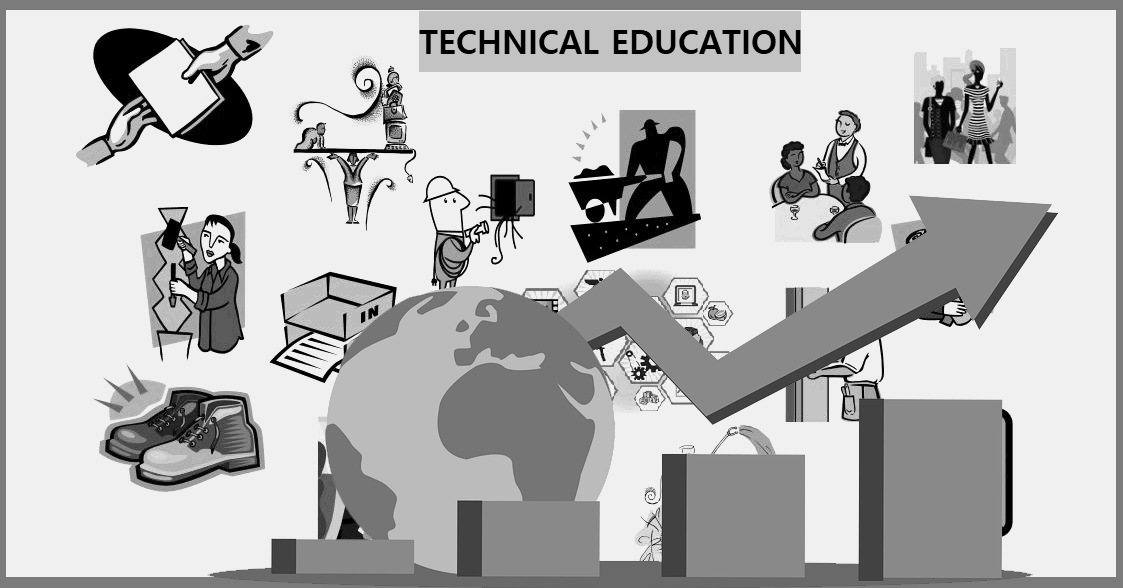State officials now have a fresh chance to enhance career and technical education (CTE) programs thanks to the July 31, 2018, signing of the Strengthening Career and Technical Education for the 21st Century Act (Perkins V). Top-notch CTE programs combine demanding academic coursework with technical courses tailored to certain professions and practical learning opportunities. These programs, though, can’t be limited to the schools with the greatest funding. These needs to be offered at schools that primarily educate historically underprivileged pupils in order to provide them with the knowledge and experience needed to compete in the high-paying jobs of the future workforce. By doing this, they aid in preparing pupils for the future and provide them more freedom to choose their post-high school careers.
In most schools, CTE courses are regarded as electives. The necessity for CTE programs that represent community demands and correspond with prospective high-paying, rapidly-growing careers is thus demonstrated by racial disparities and opportunity gaps in program completion and access. By asking applicants to set program performance objectives and local needs assessments and by pushing states to better connect CTE programs with local employment needs, Perkins V gives states more freedom to address the unique needs of employers, schools, and students. But for states to fully benefit from CTE programs, they need to develop goals that address racial disparities in participation and access. This alignment should be addressed, and the main objective of well-designed CTE programs should be equity in access and opportunity.
Advantages of CTE programs for the workforce and classroom
It makes sense to invest in CTE program improvement. Participation in CTE programs may enhance students’ academic and career results, according to research. A three-state study (Florida, Kentucky, and Indiana) revealed a positive correlation between obtaining a certification and finishing high school. Participation in CTE programs also raises the chance of enrolling in and graduating from community college. Compared to comparison groups, students in these programs demonstrate more progress toward graduation, attain higher GPAs, and score higher on standardized tests. Every extra year of education for students enrolled in advanced technical skills courses is linked to a nearly 2 percent rise in pay.
Notwithstanding these evident advantages, opponents of CTE initiatives contend that there are trade-offs to be made in the workforce. For instance, while gaining technical skills can benefit graduates immediately, students who do not enroll in upper-level curriculum will have fewer long-term job opportunities. Therefore, in order to give students a path to successful careers and jobs, schools should emphasize both academic rigor and technical abilities.
Why racial equity should be the goal of CTE programs
Programs for career and technical education (CTE) that prioritize fair access and results could assist schools in reducing opportunity gaps and addressing current racial inequities. Black and Hispanic pupils graduated from high school in 2016–17 at rates of 11% and 9%, respectively, less than the 85% national average. Compared to 81% of Asians and 72% of White adults, only 58% of Black adults and 45% of Hispanic adults have attended college since 1980. During this same period, the disparity in college degree attainment has only widened. Students who identify as Black or Latinx are more likely to drop out of STEM programs after they start college. This trend may be caused by a number of things, such as students encountering racial injustice, falling short of academic expectations, or deciding to follow occupations that support social justice causes. Significant racial wealth gaps also exist among college graduates; a recent Brookings Institution analysis revealed that white college graduates have seven times the wealth of Black graduates and four times the wealth of Latinx graduates. These disparities are also seen in the workforce, where 12 percent of working Americans are African Americans, yet only 7 percent of them hold the top 10 middle-skill, high-paying occupations. Although they make up 17% of the labor force, just 12% of middle-skill, well-paying occupations are held by Latinx Americans.
By increasing these groups’ access to and involvement in CTE programs that enhance academic and workforce outcomes, meaningfully enhancing racial equity would contribute to reducing the large opportunity inequalities that present along racial lines.
Issues with fairness in CTE participation and access
CTE programs have also been hampered by disparities in college and professional results. Historically, schools tracked pupils into low-quality programs by race and socioeconomic class, which resulted in dead-end occupations. This practice of placing students into technical education programs was an extension of segregation during the Jim Crow era. According to research, there are still differences in the availability and involvement of students of color in high-quality CTE programs. White and Black students participate in at least one CTE course at almost the same rate (82%), according to data from the National Center for Education Statistics on the federal CTE program, while their Hispanic classmates participate at a rate of 78%. These data also demonstrate that when pupils advance, the discrepancies continue and get bigger. The percentage of White, Black, and Hispanic students who complete three CTE courses and become concentrators is 22%, 18%, and 16%, respectively. Similar underrepresentation was discovered in CTE programs with a greater emphasis on STEM programming, according to an Illinois High School Association study of CTE curricula. The average number of credits that high school students received in CTE curriculum decreased steadily between 1992 and 2013. Compared to Black (2.9 credits) and Hispanic (2.6 credits) students, White students received an average of 3.2 credits in CTE in 2013.

The differences that exist in students’ preparation for college and the workforce are further exacerbated by these discrepancies in their upper-level curriculum, access to, and involvement in career education.
As employers host CTE students in excellent work-based learning experiences, they too must consider the issue of equality in CTE programs. But as states are mostly in charge of running and overseeing CTE programs, the author’s recommendations center on state policy.
How states might improve participation and access equity
Improving equity requires focusing on data gathering and sharing for student groupings, as Perkins V does. Data disaggregation on a number of characteristics, including gender and ethnicity, is mandated by law. Just 25% of studies in a study of CTE program research provided information on the racial and ethnic makeup of their samples between 2005 and 2011. However, Perkins V can assist governments in identifying and reducing current opportunity gaps by boosting data gathering on advanced academic and technical courses.
States can improve equity, for example, by setting objectives and disclosing information on participation and accessibility. For instance, in Denver, CareerConnect and the Division of Student Equity and Opportunity of Denver Public Schools have teamed to provide CTE programs to all kids. The curriculum offers work habits and technical skills that are in line with the occupations that the particular CTE populations have chosen.
In summary
The most ethnically diverse student cohort in American history is entering a career that is evolving. People of color make up over half of Generation Z, and most of them are college students. Regretfully, more equal access and participation are not being offered by the country’s present CTE routes, particularly in CTE programs that do not result in dead-end occupations.
Current labor market data present a strong argument for school districts across the country to prioritize equity by taking the lead from creative career-technical education (CTE) initiatives like those in Boston and Denver. Approximately 75% of newly generated employment since 2009 have paid less than $50,000 per year, which is somewhat more than what is needed to be classified as a middle-class household. States can develop initiatives that boost Black and Latinx students’ access to and engagement in Career Technical Education (CTE) programs that lead to well-paying jobs by gathering data and recognizing opportunity gaps in disciplines like STEM.
To better prepare children of color for advanced coursework in college and to put them on the path to higher-paying employment, school districts should also combine technical programs with more demanding curriculum. To prevent placing students of color in lower-track job preparation programs, this entails boosting enrollment in upper-level courses and establishing accountability frameworks. School districts must address racial opportunity disparities and provide kids with the tools they need to succeed as adults in order to create equitable CTE programs. Although developing these excellent CTE programs won’t be simple, now is the ideal moment for states to take the initiative.


